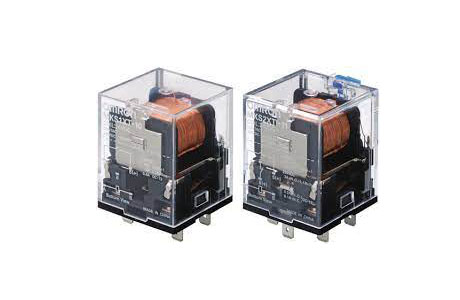What Is Digital Relay
Key Takeaway
A digital relay is a modern type of protective device used in power systems to detect electrical faults. Unlike traditional mechanical relays, digital relays use software-based algorithms and microprocessors to monitor electrical currents and identify abnormalities. This advanced technology allows for precise and quick reaction to a variety of fault conditions, enhancing the safety and efficiency of electrical distribution systems. Digital relays are key in utility and industrial settings where reliable power distribution is critical. They are also known as microprocessor type protective relays, highlighting their technological sophistication.
Introduction to Digital Relays and Their Advancements
Digital relays represent a significant evolution in relay technology, offering enhanced precision, reliability, and versatility compared to their electromechanical predecessors. These relays use digital processing to monitor and control electrical circuits, making them more efficient and accurate. Modern digital relays come equipped with advanced features such as self-diagnostics, remote communication, and integration capabilities with other digital devices, significantly improving the overall functionality and management of electrical systems. The shift from traditional to digital relays marks a substantial advancement in how electrical protection and control are handled in various applications.

Operational Principles of Digital Relays
Digital relays operate on advanced microprocessor technology. They continuously monitor electrical parameters such as current, voltage, and frequency through sensors. The data collected is processed in real-time by a microprocessor, which compares it against predefined settings. When an anomaly or fault is detected, the relay sends a signal to activate a circuit breaker or another protective device. This quick and precise detection and response mechanism ensures optimal protection and minimal downtime.
The digital nature of these relays allows for the implementation of complex algorithms and logic, enhancing their ability to protect and control electrical systems effectively. Unlike traditional electromechanical relays, digital relays can store and analyze historical data, enabling better fault diagnosis and system optimization. Their rapid response and adaptability make them essential for modern electrical systems, providing reliability and efficiency in protection and control operations.
Comparing Digital Relays with Traditional Electromechanical Relays
Digital relays offer significant advantages over traditional electromechanical relays. Their advanced microprocessing capabilities provide higher accuracy and faster response times. Unlike electromechanical relays, which rely on physical movement, digital relays have no moving parts, reducing wear and increasing their lifespan. Moreover, digital relays can store and analyze historical data, allowing for better fault diagnosis and system optimization.
While electromechanical relays are robust and straightforward, digital relays provide enhanced functionality and flexibility. They can handle more complex and dynamic electrical environments, adapting quickly to changing conditions. Digital relays also support remote monitoring and control, enabling more efficient management of electrical systems. This combination of speed, accuracy, durability, and adaptability makes digital relays an essential component in modern electrical protection and control systems.
Integration of Digital Relays in Modern Electrical Systems
Integrating digital relays into modern electrical systems significantly boosts efficiency and reliability. These relays communicate with other devices using protocols like Ethernet, Modbus, and IEC 61850, enabling seamless integration into networked systems. This connectivity supports centralized monitoring and control, simplifying the management and maintenance of electrical systems. Digital relays can be programmed to perform multiple functions, reducing the need for separate devices and streamlining system architecture. Their adaptability and advanced features make them indispensable for applications ranging from industrial automation to power distribution and smart grids. This integration ensures optimized performance and enhanced operational efficiency across various electrical infrastructures.
Future Trends and Innovations in Digital Relay Technology
The future of digital relay technology will be profoundly influenced by advancements in IoT and AI. IoT-enabled digital relays will facilitate real-time data exchange and advanced system diagnostics, leading to more responsive and intelligent control systems. AI integration will introduce predictive maintenance capabilities, allowing relays to anticipate and prevent faults before they occur, drastically reducing downtime and maintenance costs. Additionally, enhanced cybersecurity measures will be essential as these devices become more interconnected, safeguarding critical infrastructure from cyber threats. As technology evolves, digital relays will become even more crucial to the efficiency and reliability of electrical systems, offering improved performance and protection.
Conclusion
Digitalization has profoundly impacted relay performance, transforming them from simple switching devices to sophisticated components of modern electrical systems. Digital relays offer unmatched accuracy, reliability, and functionality, enhancing protection and control capabilities. Their ability to integrate seamlessly with other digital devices and systems paves the way for smarter, more efficient, and resilient electrical infrastructure. As innovations in IoT and AI continue to drive advancements, the role of digital relays will become even more critical, ensuring the stability and efficiency of electrical systems in an increasingly digital world.
